Javier Fernandez
Polytechnic University of Catalonia, FC Barcelona
WisWheat: A Three-Tiered Vision-Language Dataset for Wheat Management
Jun 06, 2025Abstract:Wheat management strategies play a critical role in determining yield. Traditional management decisions often rely on labour-intensive expert inspections, which are expensive, subjective and difficult to scale. Recently, Vision-Language Models (VLMs) have emerged as a promising solution to enable scalable, data-driven management support. However, due to a lack of domain-specific knowledge, directly applying VLMs to wheat management tasks results in poor quantification and reasoning capabilities, ultimately producing vague or even misleading management recommendations. In response, we propose WisWheat, a wheat-specific dataset with a three-layered design to enhance VLM performance on wheat management tasks: (1) a foundational pretraining dataset of 47,871 image-caption pairs for coarsely adapting VLMs to wheat morphology; (2) a quantitative dataset comprising 7,263 VQA-style image-question-answer triplets for quantitative trait measuring tasks; and (3) an Instruction Fine-tuning dataset with 4,888 samples targeting biotic and abiotic stress diagnosis and management plan for different phenological stages. Extensive experimental results demonstrate that fine-tuning open-source VLMs (e.g., Qwen2.5 7B) on our dataset leads to significant performance improvements. Specifically, the Qwen2.5 VL 7B fine-tuned on our wheat instruction dataset achieves accuracy scores of 79.2% and 84.6% on wheat stress and growth stage conversation tasks respectively, surpassing even general-purpose commercial models such as GPT-4o by a margin of 11.9% and 34.6%.
Two Ways of Understanding Social Dynamics: Analyzing the Predictability of Emergent of Objects in Reddit r/place Dependent on Locality in Space and Time
Jun 02, 2022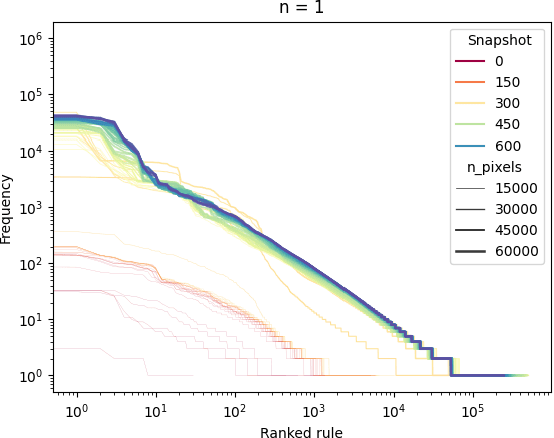
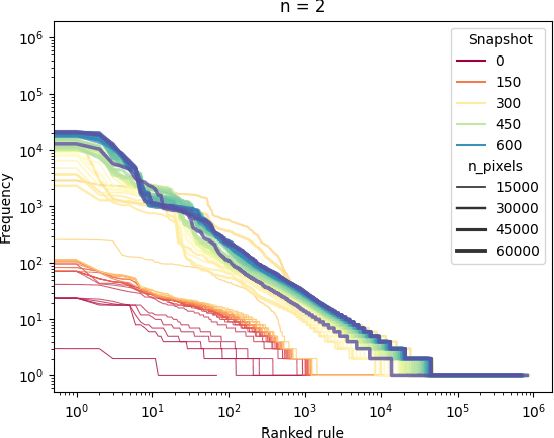
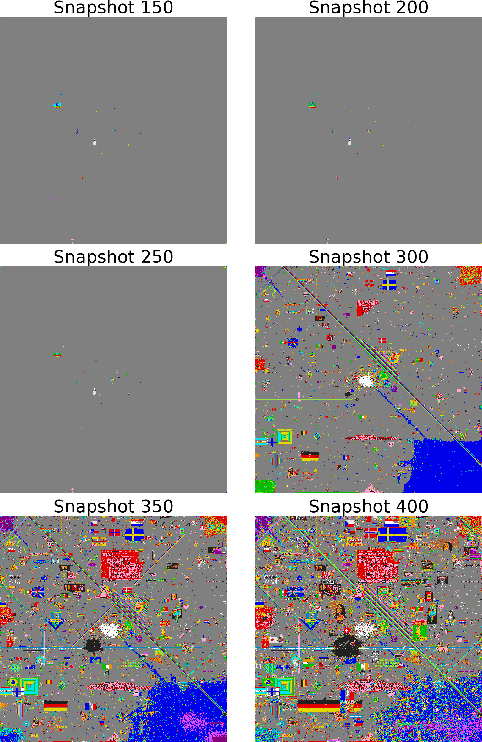
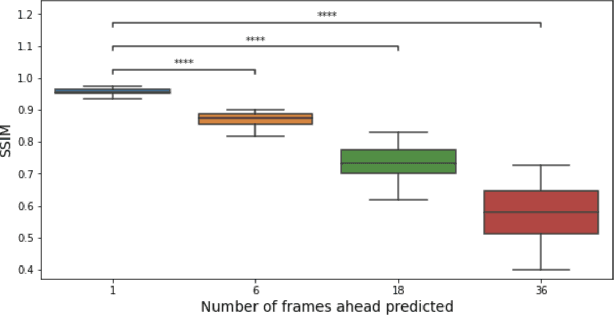
Abstract:Lately, studying social dynamics in interacting agents has been boosted by the power of computer models, which bring the richness of qualitative work, while offering the precision, transparency, extensiveness, and replicability of statistical and mathematical approaches. A particular set of phenomena for the study of social dynamics is Web collaborative platforms. A dataset of interest is r/place, a collaborative social experiment held in 2017 on Reddit, which consisted of a shared online canvas of 1000 pixels by 1000 pixels co-edited by over a million recorded users over 72 hours. In this paper, we designed and compared two methods to analyze the dynamics of this experiment. Our first method consisted in approximating the set of 2D cellular-automata-like rules used to generate the canvas images and how these rules change over time. The second method consisted in a convolutional neural network (CNN) that learned an approximation to the generative rules in order to generate the complex outcomes of the canvas. Our results indicate varying context-size dependencies for the predictability of different objects in r/place in time and space. They also indicate a surprising peak in difficulty to statistically infer behavioral rules towards the middle of the social experiment, while user interactions did not drop until before the end. The combination of our two approaches, one rule-based and the other statistical CNN-based, shows the ability to highlight diverse aspects of analyzing social dynamics.
A framework for the fine-grained evaluation of the instantaneous expected value of soccer possessions
Nov 18, 2020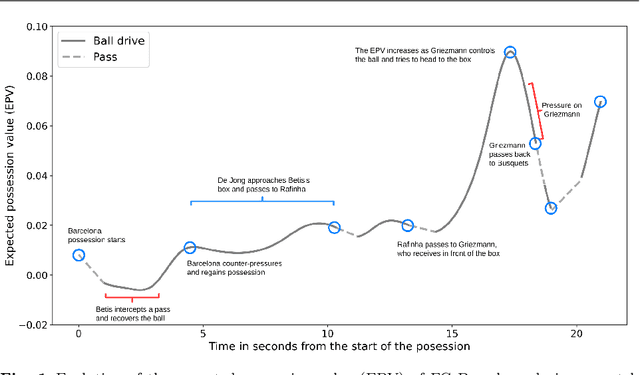

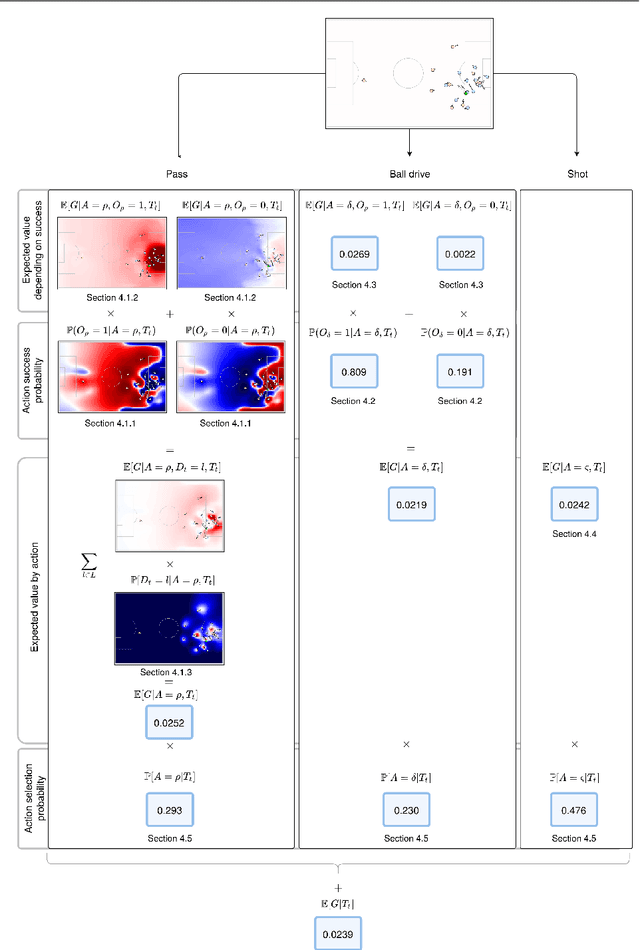
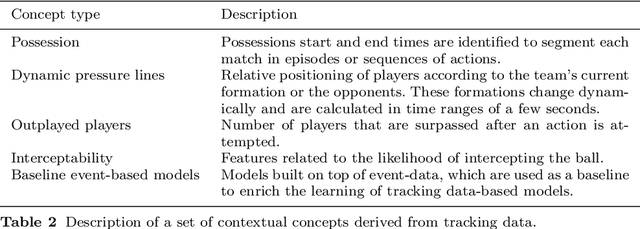
Abstract:The expected possession value (EPV) of a soccer possession represents the likelihood of a team scoring or receiving the next goal at any time instance. By decomposing the EPV into a series of subcomponents that are estimated separately, we develop a comprehensive analysis framework providing soccer practitioners with the ability to evaluate the impact of both observed and potential actions. We show we can obtain calibrated models for all the components of EPV, including a set of yet-unexplored problems in soccer. We produce visually-interpretable probability surfaces for potential passes from a series of deep neural network architectures that learn from low-level spatiotemporal data. Additionally, we present a series of novel practical applications providing coaches with an enriched interpretation of specific game situations.
Adaptive binarization based on fuzzy integrals
Mar 04, 2020

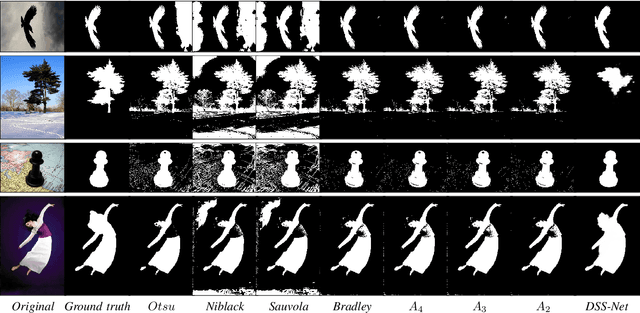
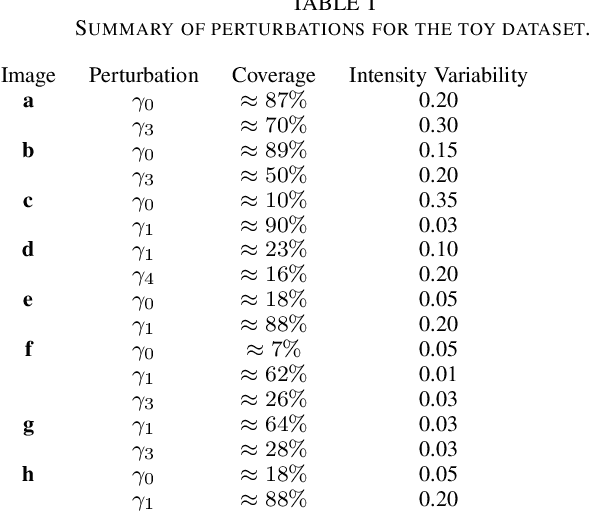
Abstract:Adaptive binarization methodologies threshold the intensity of the pixels with respect to adjacent pixels exploiting the integral images. In turn, the integral images are generally computed optimally using the summed-area-table algorithm (SAT). This document presents a new adaptive binarization technique based on fuzzy integral images through an efficient design of a modified SAT for fuzzy integrals. We define this new methodology as FLAT (Fuzzy Local Adaptive Thresholding). The experimental results show that the proposed methodology have produced an image quality thresholding often better than traditional algorithms and saliency neural networks. We propose a new generalization of the Sugeno and CF 1,2 integrals to improve existing results with an efficient integral image computation. Therefore, these new generalized fuzzy integrals can be used as a tool for grayscale processing in real-time and deep-learning applications. Index Terms: Image Thresholding, Image Processing, Fuzzy Integrals, Aggregation Functions
Effective injury forecasting in soccer with GPS training data and machine learning
Nov 05, 2018



Abstract:Injuries have a great impact on professional soccer, due to their large influence on team performance and the considerable costs of rehabilitation for players. Existing studies in the literature provide just a preliminary understanding of which factors mostly affect injury risk, while an evaluation of the potential of statistical models in forecasting injuries is still missing. In this paper, we propose a multi-dimensional approach to injury forecasting in professional soccer that is based on GPS measurements and machine learning. By using GPS tracking technology, we collect data describing the training workload of players in a professional soccer club during a season. We then construct an injury forecaster and show that it is both accurate and interpretable by providing a set of case studies of interest to soccer practitioners. Our approach opens a novel perspective on injury prevention, providing a set of simple and practical rules for evaluating and interpreting the complex relations between injury risk and training performance in professional soccer.
Generalized Interval-valued OWA Operators with Interval Weights Derived from Interval-valued Overlap Functions
Oct 20, 2016Abstract:In this work we extend to the interval-valued setting the notion of an overlap functions and we discuss a method which makes use of interval-valued overlap functions for constructing OWA operators with interval-valued weights. . Some properties of interval-valued overlap functions and the derived interval-valued OWA operators are analysed. We specially focus on the homogeneity and migrativity properties.
 Add to Chrome
Add to Chrome Add to Firefox
Add to Firefox Add to Edge
Add to Edge